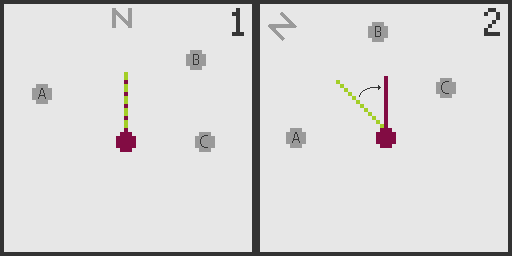I'm having trouble working out how to recalculate 2D sprite sorting / draw order based on camera rotation.
In the example below:
Screen 1 shows a non-rotated typical "top down 2D" scene, where the grey objects can be sorted based on their screen Y position, drawn from top to bottom, so in this case B, A, C.
Screen 2 shows the situation after the player/camera rotates clockwise, with the original screen up vector (green) and the new up vector (red). In this situation, sorting by object Y position will not work, because A should now be drawn after C.
What I need to do is to sort the objects not only by their Y position, but also relative to the new up vector and/or camera rotation, but I'm unsure how to handle this. Appreciate any help you can give!







